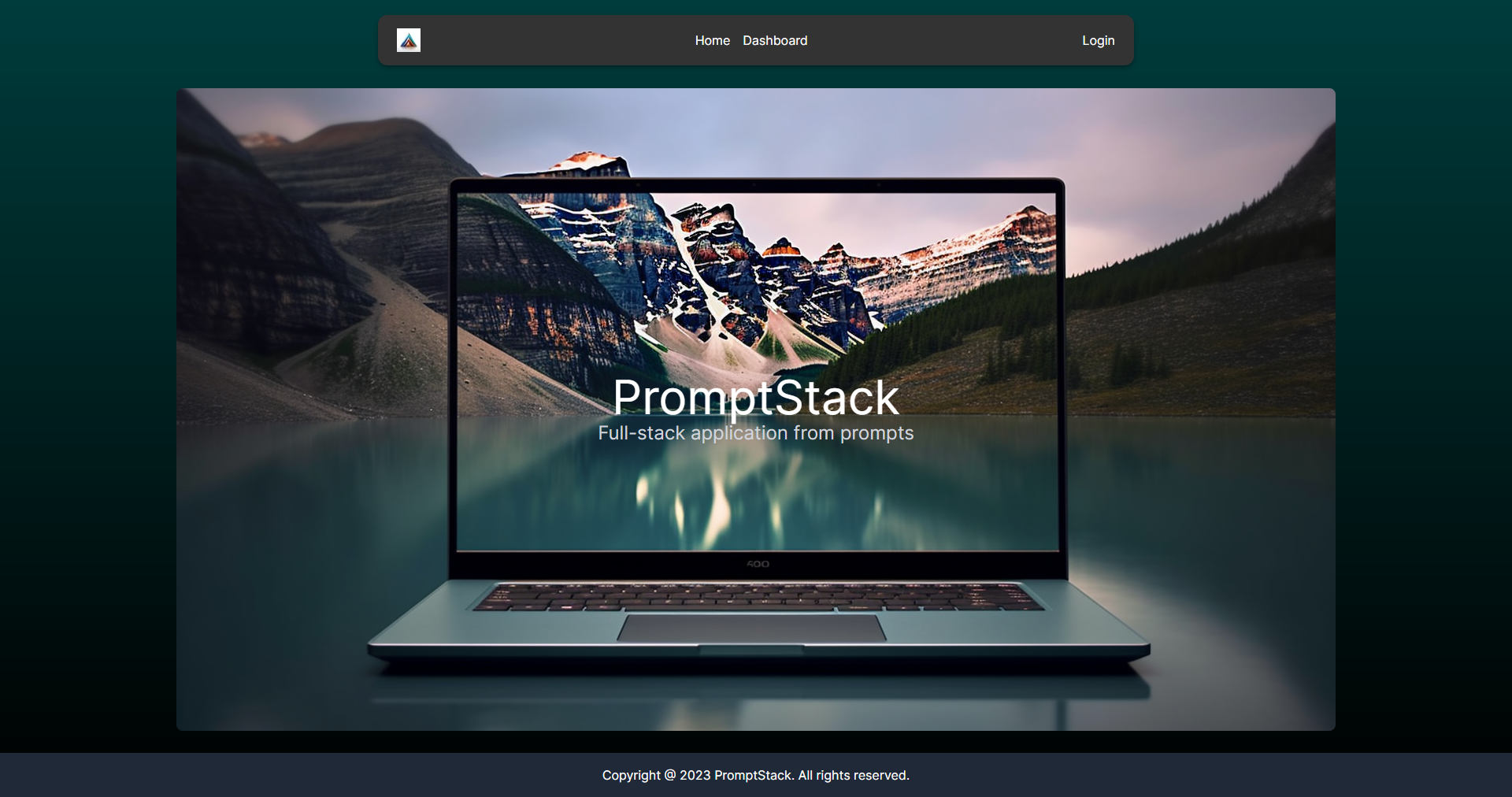Full-Stack application from Prompts 📄➡️🌐
PromptStack is a full-stack application without the code that implements it. Each file is where it needs to be, but instead of code, they are mostly
empty and have a corresponding .prompt file next to them containing instructions about how to implement the code. The config files are already
filled with the required settings, so you can focus on the part that truly matters: the implementation.
You might ask the question, why don't we use AI for the config files as well? The answer is simple: it does not make the process faster.
Linters, CSS frameworks, and ORMs usually have a --init setting, which prefills the config files with the most common settings. It is much faster to
use these built-in solutions than to generate them with AI tools.
But, this is not the case for the code, which varies project by project. In this regard, PromptStack is even more unique. Since PromptStack
contains almost no code, every user will get a slightly different implementation because of the probabilistic nature of AI tools.
The following AI tools are used in the repository:
- ChatGPT with a Plus subscription
- GitHub Copilot
- Midjourney
Note
Feel free to try other language models, coding assistants, and image generators when using the repository. However, we tested every prompt with only the three tools above, so we cannot guarantee the same success rate when someone uses alternatives.
PromptStack was created to show that anyone can build a full-stack web application with the right AI tools. While reading the prompts for the
different files, you will explore well-known prompting techniques that make any developer's life easier.
As you progress through the files, you will get a good understanding of how modern full-stack developers can use AI in their daily work.
The repository contains a backend and a frontend. No config file must be changed. You only have to generate code, text, or images. Each file has a
correspondent .prompt file next to it.
For example, to generate the implementation of app.ts, you have to look for the steps in app.ts.prompt.
The .prompt file will contain a prompt (or multiple prompts) and an explanation about what to do with it. It will explain what tool you should put
the prompt into, and what to do with the result you received.
Here is an example .prompt file for app.ts:
Tool to use: GitHub Copilot
Task: Copy the content of Prompt into app.ts, then press Enter twice. When you receive a completion,
press Tab to accept it. If you don't receive completions anymore, then this task is finished.
Copy everything between the two --- marks.
Prompt:
---
// typescript
// basic express app with two routes
// the / returns 'Hello World!' in json 'message' property
// the /healthcheck returns 'OK' in json 'status' property
// types are used where possible
// app is default exported but not listening
---
Important
Here's a pro tip: To get the most out of this repository, don't just blindly follow the instructions and copy-paste everything into the files. Read the prompts first thoroughly, think about why they will work, try to guess what the tools will generate, and finally, let them generate what they have to.
Warning
PromptStack requires coding knowledge. While the prompts were carefully crafted to work most of the time, there is no guarantee that what you
receive will be copy-pastable. It's your responsibility to double-check the result and ensure it works. It is no different than using any AI tool
during your work.
git clone git@github.com:kovrichard/prompt-stack.gitor
git clone https://github.com/kovrichard/prompt-stack.gitBackend:
cd server
pnpm iFrontend:
cd client
pnpm iNote
By default, the application uses pnpm. You can use other package managers, but then you also have to care about the correspondent lock files.
Follow the instructions in the .prompt files and generate their implementation. Once you feel you are ready, go to the next step.
Backend:
cd server
pnpm run devFrontend
cd client
pnpm run devPromptStack contains test files, but they are also empty. Tests also have their .prompt files next to them, so if you are interested, you can
generate test cases and run them with the following commands.
Backend:
cd server
pnpm testFrontend
cd client
pnpm testYou can even try a TDD approach and generate the tests first, then 'implement' the code. The .prompt files enable you to do that.
Here is a potential result you can get with PromptStack:
Richard Kovacs
